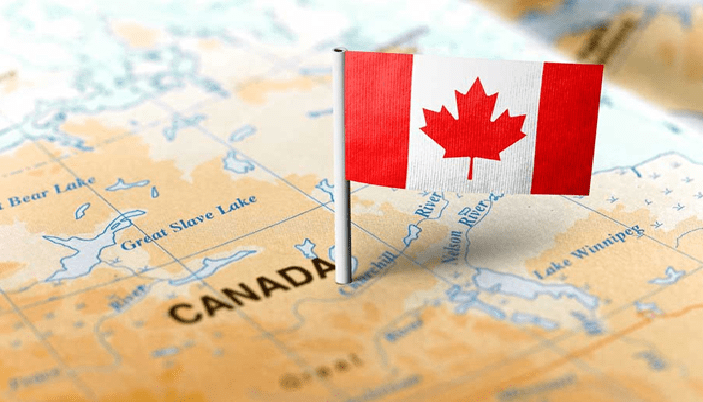Entering Canada from US border, whether for tourism, business, or other reasons, involves understanding specific entry requirements and procedures. This comprehensive guide will walk you through the essential aspects of crossing the border, including the necessary documentation, key regulations, and tips for a smooth transition.
Understanding Entry Requirements
When traveling from the US to Canada, it’s crucial to be aware of the entry requirements set by Canadian authorities. Depending on your citizenship, purpose of travel, and duration of stay, different rules may apply. Here’s a detailed overview of what you need to know:
Valid Passport and Visa
All travelers must carry a valid passport. For US citizens, a valid passport is usually sufficient for entry into Canada for short stays. However, if you’re planning a longer visit or have specific purposes like studying or working, you may need a visa or an Electronic Travel Authorization (eTA). US citizens don’t typically need a visa for tourism or short-term business trips, but an eTA is required for air travel into Canada. Ensure your passport is valid for at least six months beyond your intended stay to avoid any issues.
Electronic Travel Authorization (eTA)
An eTA is an entry requirement for visa-exempt foreign nationals traveling to Canada by air. US citizens do not need an eTA, but travelers from other countries might. The eTA is electronically linked to your passport and is valid for up to five years or until your passport expires, whichever comes first. It’s essential to apply for the eTA online before traveling and ensure all information is accurate to avoid delays.
Customs Declarations and Restrictions
When entering Canada, you must declare all items you’re bringing with you. This includes any goods purchased abroad, gifts, and even certain types of food or plants. There are specific restrictions on what you can bring into Canada, including limits on alcohol and tobacco. Be honest and transparent in your customs declaration to avoid penalties or delays.
Crossing the Border: What to Expect
Crossing the US-Canada border can be a straightforward process if you are prepared and aware of the procedures. Here’s what you can expect when you arrive at the border:
Inspection and Interviews
Upon arrival at the border, you’ll be required to present your passport and any other required documents. Border officers may ask you questions about the purpose of your visit, your itinerary, and your stay. Be prepared to provide clear and honest answers. The officers have the authority to inspect your vehicle and belongings if they deem it necessary.
Vehicle and Property Checks
If you’re driving into Canada, your vehicle will be inspected for any prohibited items. Ensure you’re aware of the regulations regarding vehicle imports, especially if you’re bringing in any significant items or equipment. It’s a good idea to keep your car’s registration and proof of insurance handy, as you may need to show them. CANADA VISA FOR AUSTRIAN NATIONALS
Health and Safety Requirements
Travelers should be aware of any health and safety requirements, such as vaccinations or COVID-19-related protocols, which may vary depending on current guidelines. Check the latest travel advisories from both US and Canadian authorities before your trip to ensure compliance with health regulations.
Tips for a Smooth Border Crossing
To ensure a hassle-free experience when entering Canada from the US border, consider the following tips:
Plan Ahead
Before you travel, make sure you have all necessary documents and are aware of the regulations that apply to your specific situation. This includes having your passport, any required visas or eTAs, and understanding customs regulations.
Be Honest and Transparent
Always provide accurate information to border officers. Misleading or false information can lead to delays, fines, or even being denied entry. Being honest about your travel plans and belongings helps facilitate a smoother process.
Prepare for Delays
During peak travel times or busy seasons, border crossings may experience delays. Allow for extra time in your travel plans and consider using alternative border crossings if possible. Keeping a flexible schedule can help alleviate stress if you encounter unexpected delays.
Know Your Rights
Familiarize yourself with your rights as a traveler. Understanding what you are entitled to and what you need to comply with can help you navigate the border crossing process more effectively. In case of any issues, knowing how to address them appropriately is beneficial.
Special Considerations
Entry for Business and Work
If you’re entering Canada for business purposes or to work, additional requirements may apply. Depending on the nature of your work and the length of your stay, you might need a business visa or work permit. Ensure you have the necessary documentation and approvals before your trip.
Traveling with Pets
If you’re bringing pets into Canada, you must meet specific health and vaccination requirements. Pets typically need to be accompanied by a health certificate and proof of vaccinations. Check with the Canadian Food Inspection Agency (CFIA) for detailed guidelines on bringing pets into Canada.
Traveling with Minors
Traveling with minors may require additional documentation. If you’re traveling with children who are not your own, you might need to provide a letter of consent from the child’s parents or legal guardians. This letter should include details of the trip and consent for the minor’s travel.
Conclusion
Entering Canada from the US border involves understanding and adhering to specific entry requirements and regulations. By ensuring you have the correct documentation, being prepared for customs procedures, and following the tips provided, you can make your border crossing experience smooth and stress-free. Whether you’re visiting for business, pleasure, or another reason, being well-prepared will help ensure a positive experience as you enter Canada.

